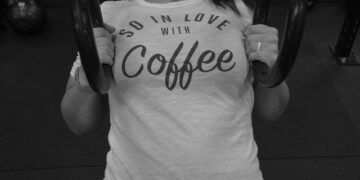Like so many mere mortals in the 1990s, my friends and I were on a (one-sided) first-name basis with supermodels Christy, Cindy, Linda, and Naomi. We’d likely never been within 500 miles of these women, the velvet rope of their champagne-and-Concorde lifestyles closed off to a bunch of kids in suburban Texas. Still, their names, faces, and bodies became almost as familiar to us as our own. Like most of the planet at that time, we were transfixed by their impossible beauty.
When I heard about the AppleTV+ docuseries The Super Models, now streaming, I found myself yearning to find out more about these women, to hear about their lives—then and now. It used to be about simply marveling at their physical perfection–bone structures and legs and lips that made us question our own short legs or undetectable cheekbones. In 2023, as the women move through their 50s, it’s about looking past the perfection they were expected to embody in their youth and glimpsing something deeper, something relatable.
In the third episode of the series, there’s a clip of feminist pop culture critic Camille Paglia calling fashion magazines “artwork for the masses.” That’s often how these women were presented to us, as works of art. Their beauty outshone anything that may have been going on in their lives. Any pain or insecurity of theirs was airbrushed away, erased by the opulence of a Versace gown or the structure of an Azzedine Alaïa dress. Insecurities existed, as each woman confesses throughout the episodes, but supermodels weren’t paid to act like regular people with challenges or fears. They were paid to leave the rest of us—awkward teens and non-superhuman adults alike—in awe.
From left: Linda Evangelista, Christy Turlington, Naomi Campbell, and Cindy Crawford on the runway for Gianni Versace fall 1991
In the 1990s, magazines and movies ruled our world. TikTok didn’t exist and Instagram wasn’t a thing, and we got our pop culture–and our perceptions of beauty–from MTV and George Michael’s “Freedom: ’90!” video (directed by David Fincher!), in which Cindy, Naomi, Linda, and Christy danced around lip syncing and looking like noir goddesses dressed in bedsheets. Now models like Adwoa Aboah and Emily Ratajkowski have podcasts and platforms, but then it was all about the look. I’d heard a little about these women over the last few decades—Christy Turlington had her Every Mother Counts nonprofit, and she seemed to run a lot of marathons; Cindy Crawford’s daughter Kaia was modeling; Naomi Campbell had been called “difficult” and gotten arrested; and most recently, Linda Evangelista spoke out about the CoolSculpting cosmetic procedure that left her body permanently deformed.
Because I first encountered these women in that pre-podcast era when beautiful models weren’t really asked to speak unless they were shilling for Chanel, my perceptions of what these women’s personalities were actually like had been shaped entirely by what the media fed us. As The Washington Post’s Robin Givhan says in the first episode of the series, “There was a mythology to models. They were expected to hide their humanity.”
>>> Read full article>>>
Copyright for syndicated content belongs to the linked Source : Glamour – https://www.glamour.com/story/toppling-the-myth-of-the-supermodel































